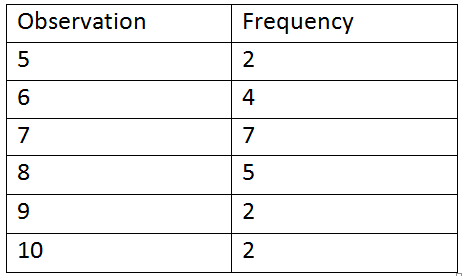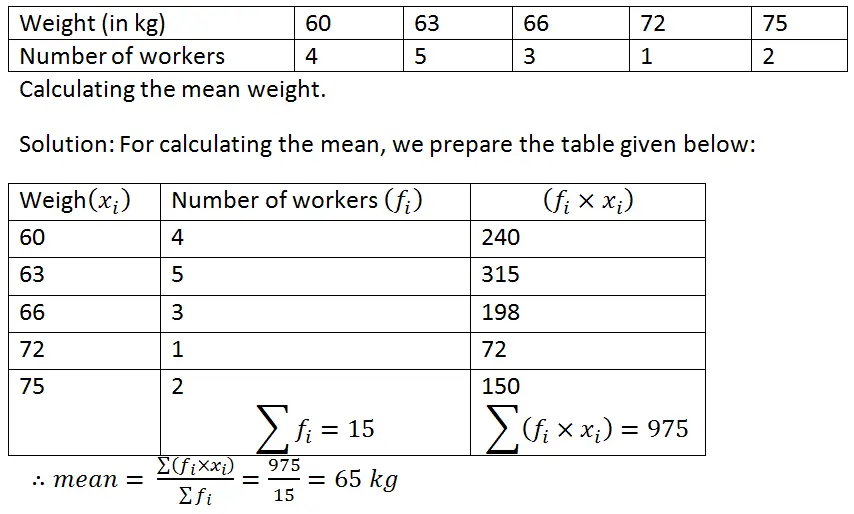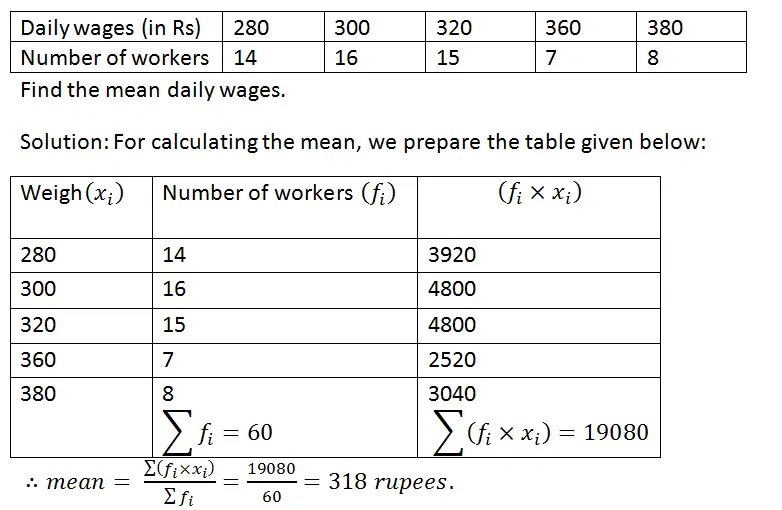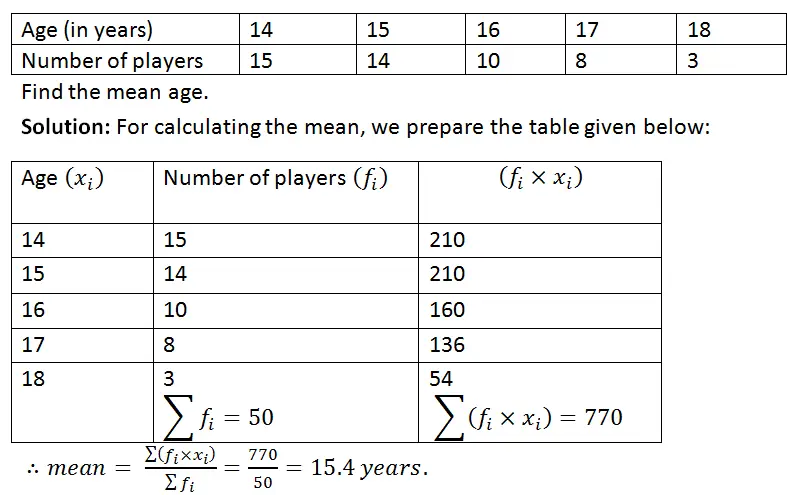RS Aggarwal Class 7 Mathematics Twenty One Chapter Collection and Organisation of Data (Mean, Median and Mode) Exercise 21A Solution
EXERCISE 21A
(1) Define the terms:
(i) Data: A collection of numerical figures giving some particular type of information is called data.
(ii) Raw data: data obtained in the original form is called raw data.
(iii) Array: Arranging the numerical figures of a data in ascending or descending order is called array.
(iv) Tabulation of data: Arranging the data in a systematic form in the form of a table is called tabulation of the data.
(v) Observation: Each numerical figure in a data is called an observation.
(vi) Frequency of an observation: The number of times a particular observation occurs is called its frequency.
(vii) Statistics: It is the subject that deals with the collection, presentation, analysis and interpretation of numerical data.
(2) A die was thrown 20 times and the following outcomes were recorded:
5, 2, 1, 3, 4, 4, 5, 6, 2, 2, 4, 5, 5, 6, 2, 2, 4, 5, 5, 1
Arrange the above data in ascending order and prepare the frequency table.

(3) The daily wages (in Rs) of 15 workers in a factory are given below:
400, 360, 300, 300, 260, 360, 360, 400, 300, 260, 360, 360, 400, 300, 360
Arrange the above data in ascending order and prepare the frequency table.

(4) Write the data given below in ascending order and prepare the frequency table.
7, 8, 7, 10, 6, 8, 9, 7, 10, 5, 7, 6, 8, 5, 6, 7, 8, 9, 7, 6, 7, 8

(5) Fill in the blanks:
(i) Data means information in the form of numerical figures.
(ii) Data obtained in the original form is called raw data.
(iii) Arranging the numerical figures in ascending or descending order called an array.
(iv) The number of times a particular observation occurs is called its frequency.
(v) Arranging the data in the form of a table is called tabulation of data.
(6) Find the mean of first five natural numbers.
Solution: First five natural number = 1, 2, 3, 4, 5.
Mean of the first five natural numbers = (1+2+3+4+5)/5 = 15/5 = 3
(7) Find the mean of first six odd natural numbers.
Solution: First six odd natural numbers are 1, 3, 5, 7, 9, 11.
Mean of the first six natural numbers = (1+3+5+7+9+11)/6 = 36/6 = 6
(8) Find the mean of first seven even natural numbers.
Solution: First seven even natural numbers are 2, 4, 6, 8, 10, 12, 14.
Mean of these numbers = (2+4+6+8+10+12+14)/7 = 56/7 = 8
(9) Find the mean of the first five prime numbers.
Solution: First five prime numbers are 2, 3, 5, 7, 11.
Mean of these numbers = (2+3+5+7+11)/5 = 28/5 = 5.6
(10) Find the mean of first six multiples of 5.
Solution: First six multiples of 5 are 5, 10, 15, 20, 25 and 30.
Mean of these number = (5+10+15+20+25+30)/6 = 105/6 = 17.5
(11) The following table shows the weights (in kg) of 15 workers in a factory:

(12) The daily wages (in rupees) of 60 workers in a factory are given below:

(13) The heights (in cm) of 90 plants in a garden are given below:

(14) The ages (in years) of 50 players of a school are given below:

(15) The heights (in cm) of 40 boys were measured and recorded as under:
For more exercise solutions, Click Below –
Leave a Reply